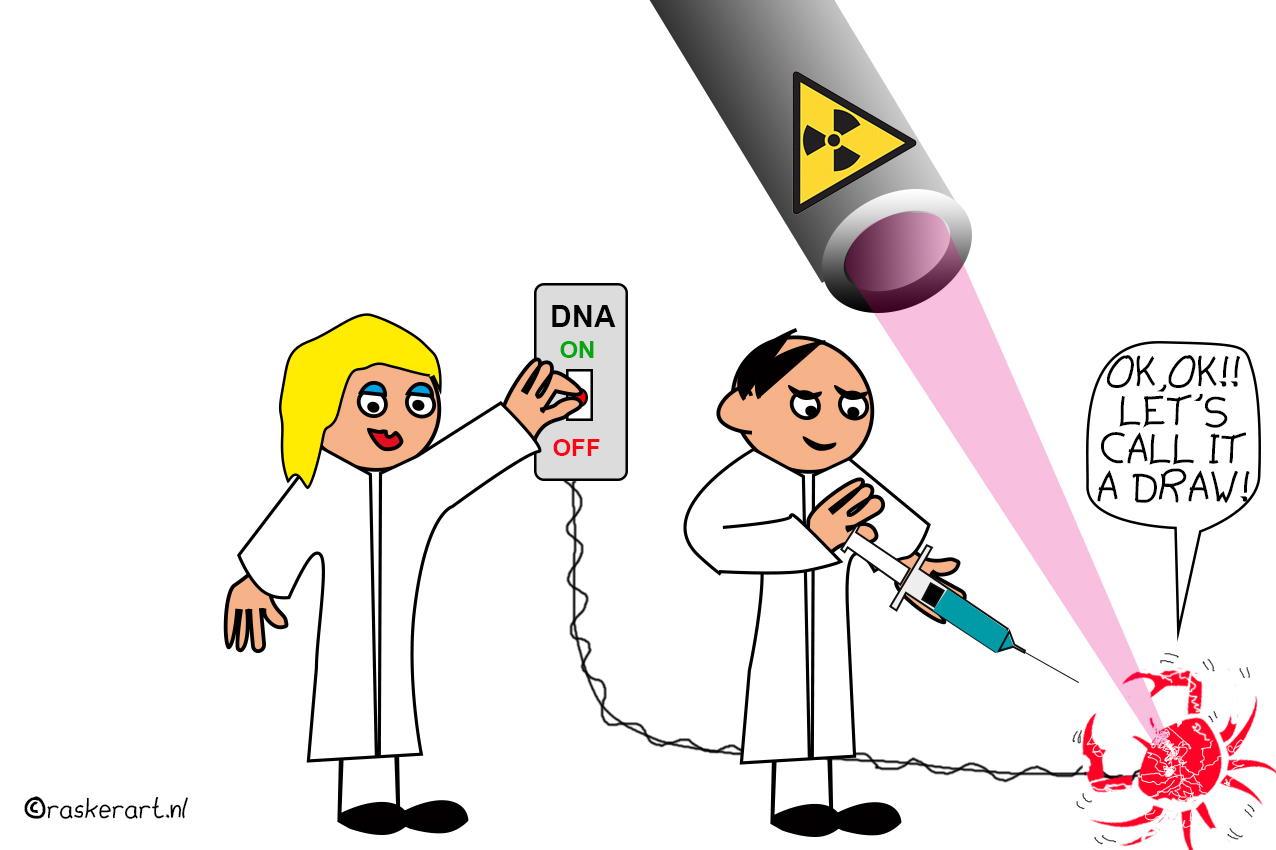
Cancer is a collective term for more than one hundred different diseases. Among these diseases, there are several types of tumors and sub-tumors that need to be treated. And obviously, every human being is different. All this combined makes treatment extremely complicated. Whereas up until the last century it was mainly chemotherapy, radiotherapy, and surgery that were used, in recent decades more and more new treatments and solutions have emerged aimed at tackling cancer at the earliest possible stage.
Such as the TMGO technique developed by scientists from Geneva and Amsterdam, which can be used to carry out tests on cancer cells as well as healthy cells. This makes it possible to determine a drug combination that is most suitable. TMGO stands for phenotypically controlled, therapy-guided multidrug optimization.
At the Leiden University Medical Center in the Netherlands, senior lecturer at the Department of Surgery, Wilma Mesker, is working on a blood test to help general practitioners detect tumors at an early stage. Leiden scientists are also developing fluorescent, luminous substances that attach to tumor cells. As a consequence, a tumor lights up during surgery and the surgeon can remove it extremely precisely.
Plenty of treatments, but how do you know which treatment is the right one?
Professor Vivianne Tjan-Heijnen, head of Medical Oncology at Maastricht UMC+ (the Netherlands), sees molecular diagnostics as the future. “We previously only looked through the microscope and made analyses of the receptors, the so-called binding properties. But nowadays, you tend to look much more at the DNA material in the cell’s nucleus. We can use this genetic information to determine the subtype of cancer that is found. You can link that to the prognosis and it can tell us something about the chances of a certain treatment succeeding or not.”
Our body is made up of somatic cells. These cells share and renew themselves constantly. This is normal. In our genes, bits of DNA, located in the nucleus of cells, indicate when a cell should start sharing or renewing itself. If this happens in another abnormal and chaotic way, a malignant tumor may develop.
Molecular diagnostics
“In patients with metastasized breast cancer, but also with other types of cancer, you see that we are increasingly going deeper into the analysis of tumor characteristics,” says Tjan. Once we know what DNA a tumor is made up of, targeted treatment is feasible. A tumor can be sensitive to hormone therapy, but not to chemotherapy.
Breast cancer, which Tjan specializes in, might be hormone-sensitive or hormone-insensitive. Hormone sensitivity means that sex hormones are capable of stimulating the tumor to grow. This is not the case with hormone insensitivity. The HER2 protein also plays a role in the growth of tumors. A HER2-positive tumor means that an excessive amount of HER2 protein is present in the tumor. If the HER2 protein is not excessively present, we call this a HER2-negative tumor. If the HER2-protein is not excessively present and the tumor is insensitive to hormones (estrogen and progesterone), then we refer to it as triple-negative breast cancer. Tjan goes on: “If we know that a patient has a triple-negative form of breast cancer, and it is spreading, it is often a rather aggressive form of breast cancer. In that case, the tumor does not react well to treatment.”
Specific treatment options
“By now, we know that besides hormone receptors and HER2, other characteristics are also important, such as the presence or absence of PD-L1, TILs, BRA1/2 and PIK3CA”, Tjan continues. “These kinds of characteristics have only been known for a few years. I am convinced that when we are a few more years down the road, we will be able to differentiate even more subgroups. And that more and more specific treatment options will become available, which offer patients a much better outlook.”
At the moment, the knowledge around DNA profiles mainly comes from patients who are suffering from metastatic cancer. But the sooner you know which treatment is the right one, the better, says Tjan. “If you give the right treatment sooner, you can probably cure patients with the same treatment more often and prevent it from spreading.”
Two minutes to midnight
These treatments – which are based on what is called molecular diagnostics – are, according to Tjan, impressive developments that offer patients far more options than they have ever had. Molecular diagnostics is now really taking off, the medical oncologist notes. At the Center for Personalized Cancer Treatment, doctors, researchers, and Dutch hospitals are working together on more and more personalized cancer treatments. “It’s two minutes to midnight. We are on the eve of using molecular diagnostics as the standard.”
Turning DNA on or off
Her Maastricht colleague, Professor of Pathobiology of Cancer, Manon van Engeland, is researching additional abnormalities on the gene material, i.e. epigenetics. A DNA abnormality is an abnormality that occurs in the gene material. DNA can still be normal, but it might be shielded. Then the gene is no longer visible or, on the contrary, it can be made visible. By mapping epigenetic factors, the prognosis of a patient can sometimes be determined even more accurately. Along with which additional treatments are needed, Tjan explains. “This research is for the most part still in the laboratory phase, but it is looking promising.”
“Incidentally, it is not the case that these targeted therapies are necessarily easier to tolerate. And there is always one person sitting across from you, and every person is different. But what you hope is that if you really are able to map out a tumor accurately, a combination of targeted treatments will enable you to outsmart the tumor. With the right combination of treatments, you might prevent the tumor from having time to evolve.”

